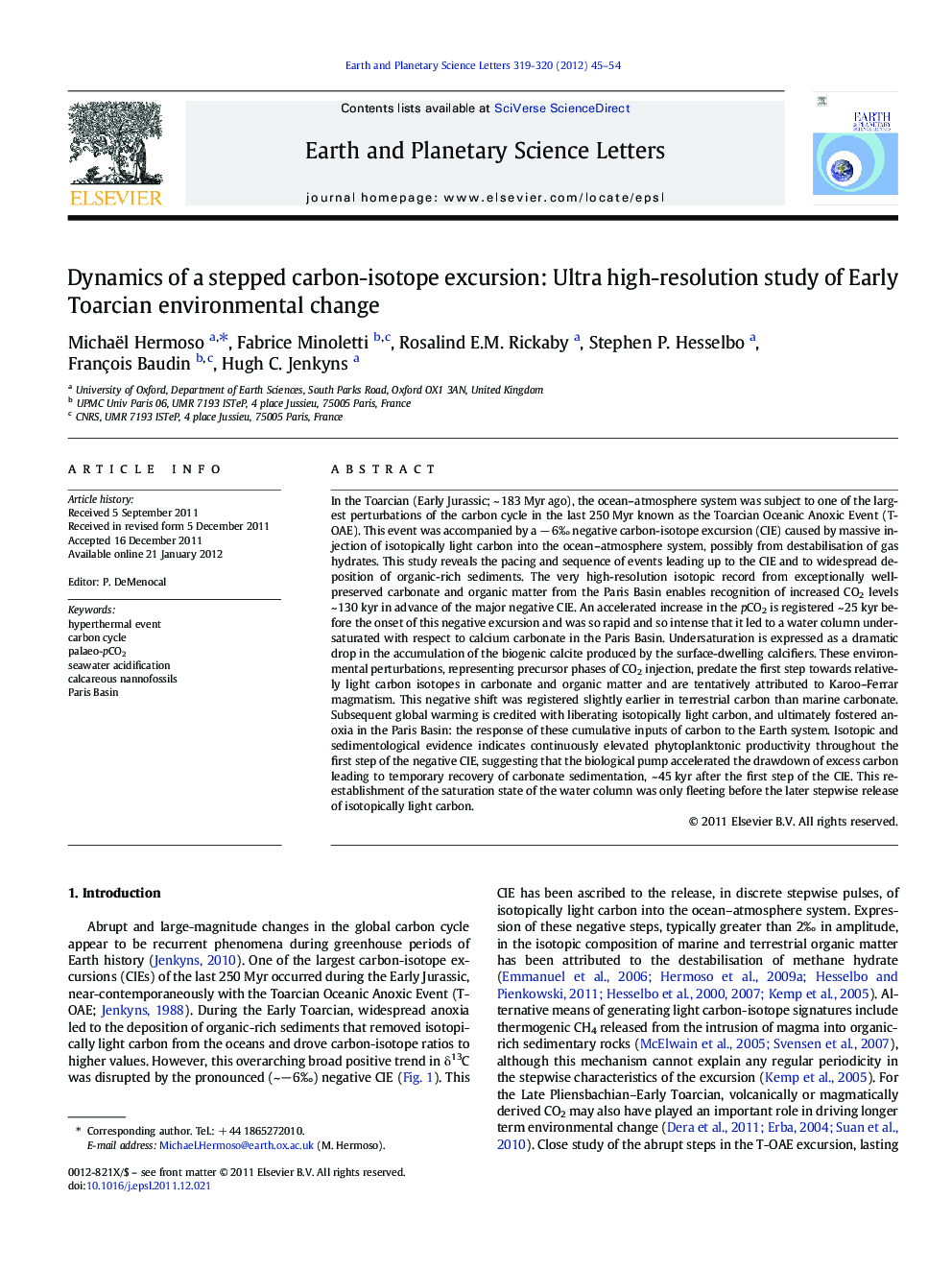| Article ID | Journal | Published Year | Pages | File Type |
|---|---|---|---|---|
| 6430687 | Earth and Planetary Science Letters | 2012 | 10 Pages |
In the Toarcian (Early Jurassic; ~ 183 Myr ago), the ocean-atmosphere system was subject to one of the largest perturbations of the carbon cycle in the last 250 Myr known as the Toarcian Oceanic Anoxic Event (T-OAE). This event was accompanied by a â 6â° negative carbon-isotope excursion (CIE) caused by massive injection of isotopically light carbon into the ocean-atmosphere system, possibly from destabilisation of gas hydrates. This study reveals the pacing and sequence of events leading up to the CIE and to widespread deposition of organic-rich sediments. The very high-resolution isotopic record from exceptionally well-preserved carbonate and organic matter from the Paris Basin enables recognition of increased CO2 levels ~ 130 kyr in advance of the major negative CIE. An accelerated increase in the pCO2 is registered ~ 25 kyr before the onset of this negative excursion and was so rapid and so intense that it led to a water column undersaturated with respect to calcium carbonate in the Paris Basin. Undersaturation is expressed as a dramatic drop in the accumulation of the biogenic calcite produced by the surface-dwelling calcifiers. These environmental perturbations, representing precursor phases of CO2 injection, predate the first step towards relatively light carbon isotopes in carbonate and organic matter and are tentatively attributed to Karoo-Ferrar magmatism. This negative shift was registered slightly earlier in terrestrial carbon than marine carbonate. Subsequent global warming is credited with liberating isotopically light carbon, and ultimately fostered anoxia in the Paris Basin: the response of these cumulative inputs of carbon to the Earth system. Isotopic and sedimentological evidence indicates continuously elevated phytoplanktonic productivity throughout the first step of the negative CIE, suggesting that the biological pump accelerated the drawdown of excess carbon leading to temporary recovery of carbonate sedimentation, ~ 45 kyr after the first step of the CIE. This re-establishment of the saturation state of the water column was only fleeting before the later stepwise release of isotopically light carbon.
⺠Record of the Early Toarcian CIE with unprecedented resolution. ⺠The CIE is preceded by cumulative rise in pCO2 linked to Karoo-Ferrar magmatism. ⺠The CIE was registered first in terrestrial carbon and then in marine carbonate. ⺠High pCO2 levels led to surface seawater acidification prior to and during the CIE. ⺠Transient recovery of seawater alkalinity occurred < 50 kyr after onset of the CIE.
